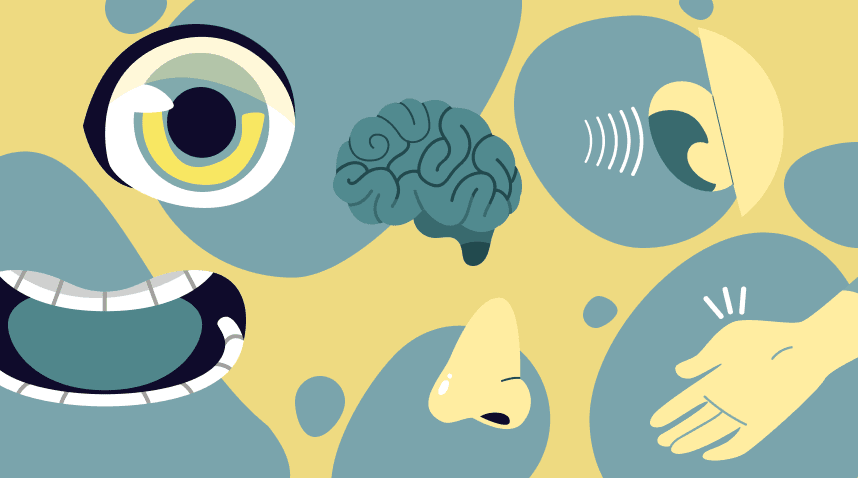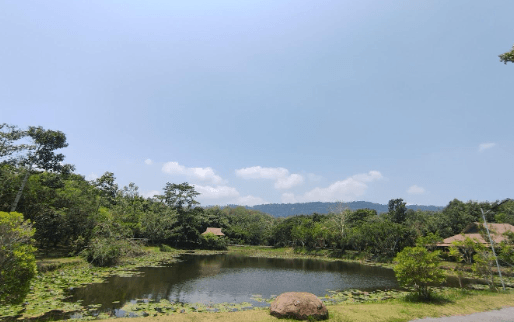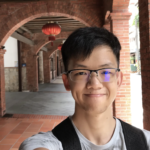TL;DR: Yi Khoon goes on retreat at Wat Pah Subthawee, Luang Por Ganha’s monastery. Learning from Luang Por**, he realises the importance of (1) letting go of our likes, dislikes and fixed views, for attachment to these brings suffering. To do so is (2) to be mindful; to perceive the arising of sensations and their fading away without clinging to them. He realises he should also strive to be (3) happy — both at work, and outside of it.
Author’s Note: This article shares my takeaways from a nine-day self-retreat at the monastery where Luang Por Ganha resides (Wat Pah Subthawee). The teachings referenced were given by Luang Por Ganha in Thai, translated by a volunteer or Ajahn* Tillo (Luang Por Ganha’s attendant, a German monk) during the morning audience addressing both laypeople and monastics.
“Losing your sense of self”

This was a point that was repeated almost daily in Luang Por’s audience. What does “sense of self” mean? And what does “losing” mean?
For that I consulted Ajahn Tillo and he mentioned that “sense of self ” meant one’s “likes and dislikes”. Likes and dislikes towards what? To get a clearer picture I referred to SN 22.59
Form (… feelings, perceptions, saṅkhārā (volitional formations), consciousness)is not-self …
“Is feeling permanent or impermanent?” …
“Impermanent, sir.”“But if it’s impermanent, is it suffering or happiness?”
“Suffering, sir.”“But if it’s impermanent, suffering, and perishable, is it fit to be regarded thus: ‘This is mine, I am this, this is my self’?
– SN22.59 Anattalakkhaṇasutta (The characteristics of not-self)
Matching up the sutta and the comment from Ajahn Tillo, I understand Luang Por asking us to drop our preferences for the aggregates and our attachment to forms, feelings, thoughts, and perceptions of things.
Why did Luang Por stress this?
I think it’s because we are always drifting between likes and dislikes, and holding onto fixed views about things. But the world is impermanent and constantly changing.
So having a fixed view (“I must have the chicken rice I like!”) means that the day your favourite thing is gone, there will be dukkha (Pali: suffering/dissatisfaction), which is the Second Noble Truth: craving/attachment leads to suffering.
The way out of dukkha is to drop our likes and dislikes and be okay with the world as it is. If the chicken rice store is open, there is nice chicken rice to eat. If the chicken rice store is closed for good, it’s okay, I can eat something else.
Dropping our preferences is easier said than done. So how do we do it? The other two points share more on how we can do that.
“Mindfulness in all four postures and not just on the cushion.”

The second point that Luang Por stressed was to have mindfulness in all four postures (standing, walking, sitting, and lying down; i.e. mindfulness in all our everyday activities) with Sati (Pali: mindfulness) and Sampajañña (Pali: clear comprehension).
Having mindfulness and clear comprehension of …?
Having mindfulness and clear comprehension of sense contact (the formation of sensations through the meeting of our sensory organs and external phenomena) and the impermanence of the sensations.
As we go about our daily lives — seeing, hearing, tasting, smelling, touching and thinking — we have many instances of sense contact. From this, our likes and dislikes about the sensations that arise are triggered based on our past conditioning.
Luang Por reminds us to go about our lives being mindful (e.g. using the breath as a meditation object), see that we have sense contact (I see something), and see the sense objects fade away (I see something, and it’s gone).
To appreciate this, we should see the results of not following this teaching. We see a food item, recognize that it is something we like, and we decide to eat it. When the food is finished, we lament that there’s not enough, and greed arises. When we see food that we dislike, aversion to the food arises, and we have negative feelings. Both likes and dislikes are triggered by the sight of food.
So instead of getting attached, we should be aware that we have a sense experience (sight/smell etc.), be aware of the experience, and see the experience fade, while not getting attached to it.
Returning to the teaching about mindfulness in all four postures, Luang Por mentioned to a group of Korean monastics that they should be like normal people and walk around the monastery looking straight instead of looking at the floor.
I found this to be a cute example which meant that even monastics should go about their daily lives like laypeople (with sense restraint). Instead of looking at the floor, rejecting all sense contact, the Korean monastic should have sense contact and see sense contact fade as part of their training.
Note: This is my personal interpretation of the situation. Any misinterpretations are regretted.
“Learn to be happy at work and at home”
The third takeaway was a piece of advice directly given to me by Luang Por. I realise that as I go about daily life, I tend to separate work life and daily life.
I would tell myself to bear the suffering or stresses of work to get a paycheck. Then I will relax after work and be happy.
But upon reflection, since work takes up a large part of my life, I should be enjoying my work on top of my personal life. I mean — I can die at work, and so I should die happy.

But work is stressful, right? Stress comes from wanting a certain outcome. So, I should learn to manage the conditions and hope to deliver the work successfully (if the outcome is not what was expected, I should exercise right speech to deliver the negative news to my boss peacefully hehe).
Gratitude to the lay volunteers and retreatants
My self-retreat at Luang Por Ganha’s monastery was hassle-free, and I was very well taken care of even though it was my first time there. This is only made possible due to the resolute lay volunteers and monastics at the monastery who were so welcoming and pleasant to be around.
The volunteers went through their respective duties: from carrying out administrative activities, cooking, cleaning, and arranging the monastery selflessly and tirelessly.
They truly practise the teachings of Luang Por in their acts of service, putting aside their sense of self and their preferences to serve others even though they are tired.
As a fellow volunteer at Dhamma groups in Singapore, I see the efforts of the volunteers and have a deep appreciation that they can run such a big monastery full of joy and without any stress.
Footnote:
* Ajahn: meaning “one who teaches” in Thai, used to address Buddhist monks who have kept their precepts unbroken for a period of ten years;
** Luang Por: meaning “venerable father” in Thai, used as a title for respected senior Buddhist monastics, signifies an Ajahn of acknowledged seniority in Thai Buddhism.
Wise steps:
- The first is a tip from Luang Por and I’ll steal it: Have periods of mindfulness during work to reset yourself. Do short sessions of breath meditations throughout your working hours to calm yourself down.
- Know your preferences, likes and dislikes. If you know that you like or dislike certain foods, become mindful before you start eating that food. So, you don’t get distracted by your preferences. But please still enjoy your food and experiences, just don’t get attached.
- Pay Luang Por Ganha a visit and learn from him directly.


